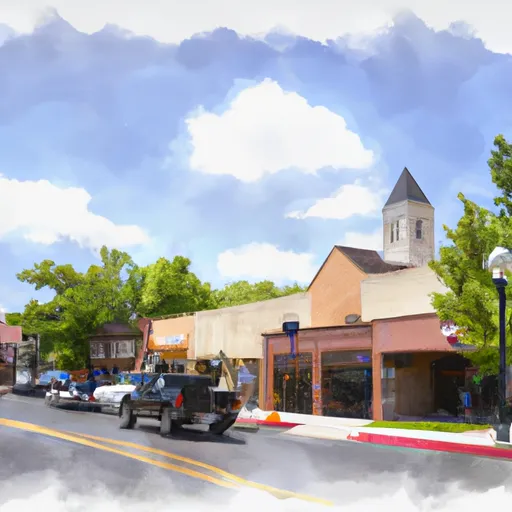-
 Snoflo Premium
Snoflo Premium
Get unlimited access to all our content
With no Ad interruptions! - Start Your Free Trial Login with existing account
Anderson
Eden Index
Climate
10.0
•
Recreation
6.0
•
Community
2.3
•
Safeguard
6.7/10

Anderson is a small city located in Northern California, with a Mediterranean climate characterized by mild, wet winters and hot, dry summers. The area is known for its abundant hydrology constituents, including the Sacramento River and its tributaries, which provide ample opportunities for water-based activities like fishing, boating, and kayaking. The surrounding hills and mountains offer hiking and mountain biking trails, while the nearby Lassen Volcanic National Park provides opportunities for camping, wildlife viewing, and winter sports. The city is also home to the Anderson River Park, which features picnic areas, playgrounds, and a swimming area. Overall, Anderson offers a variety of outdoor recreation opportunities for visitors and residents alike.
What is the Eden Index?
The Snoflo Eden Index serves as a comprehensive rating system for regions, evaluating their desirability through a holistic assessment of climate health, outdoor recreation opportunities, and natural disaster risk, acknowledging the profound impact of these factors on livability and well-being.
Climate Health Indicator (CHI): 10.0
Anderson receives approximately
873mm of rain per year,
with humidity levels near 61%
and air temperatures averaging around
17°C.
Anderson has a plant hardyness factor of
9, meaning
plants and agriculture in this region tend to thrive here all year round.
By considering the ideal temperature range, reliable water supplies, clean air, and stable seasonal rain or snowpacks, the Climate Health Indicator (CHI) underscores the significance of a healthy climate as the foundation for quality living.
A healthy climate is paramount for ensuring a high quality of life and livability in a region, fostering both physical well-being and environmental harmony. This can be characterized by ideal temperatures, reliable access to water supplies, clean air, and consistent seasonal rain or snowpacks.
Weather Forecast
Streamflow Conditions
Lower Sacramento
Area Rivers
Lower Sacramento
Snowpack Depths
Lower Sacramento
Reservoir Storage Capacity
Lower Sacramento
Groundwater Levels
Recreational Opportunity Index (ROI): 6.0
The Recreational Opportunity Index (ROI) recognizes the value of outdoor recreational options, such as parks, hiking trails, camping sites, and fishing spots, while acknowledging that climate plays a pivotal role in ensuring the comfort and consistency of these experiences.
Access to outdoor recreational opportunities, encompassing activities such as parks, hiking, camping, and fishing, is crucial for overall well-being, and the climate plays a pivotal role in enabling and enhancing these experiences, ensuring that individuals can engage in nature-based activities comfortably and consistently.
Camping Areas
| Campground | Campsites | Reservations | Toilets | Showers | Elevation |
|---|---|---|---|---|---|
| Beehive Point - dispersed | None | 1,083 ft | |||
| Arbuckle Flat | 9 | 1,019 ft | |||
| Lower Salt Creek - Dispersed | None | 1,045 ft | |||
| Nelson Point | 9 | 1,091 ft | |||
| Jones Valley (Upper) | 8 | 1,094 ft | |||
| Greens Creek | 7 | 1,165 ft | |||
| Jones Valley (Lower) | 16 | 1,149 ft | |||
| Bailey Cove | 9 | 1,087 ft | |||
| Shasta (OHV) | 23 | 627 ft | |||
| Sycamore Grove | 30 | 268 ft |
Nearby Fishing
Nearby Ski Areas
Catastrophe Safeguard Index (CSI):
The Catastrophe Safeguard Index (CSI) recognizes that natural disaster risk, encompassing floods, fires, hurricanes, and tornadoes, can drastically affect safety and the overall appeal of an area.
The level of natural disaster risk in a region significantly affects safety and the overall livability, with climate change amplifying these risks by potentially increasing the frequency and intensity of events like floods, fires, hurricanes, and tornadoes, thereby posing substantial challenges to community resilience and well-being.
Community Resilience Indicator (CRI): 2.3
The Community Resilience Indicator (CRI) recognizes that education, healthcare, and socioeconomics are crucial to the well-being of a region. The CRI acknowledges the profound impact of these elements on residents' overall quality of life. By evaluating educational resources, healthcare accessibility, and economic inclusivity, the index captures the essential aspects that contribute to a thriving community, fostering resident satisfaction, equity, and social cohesion.

